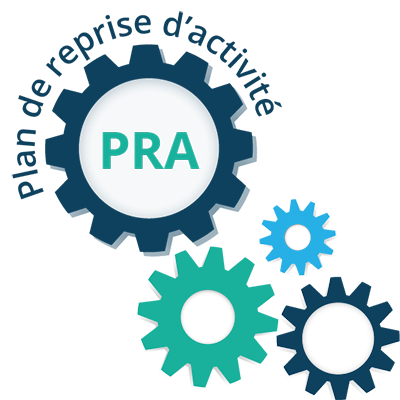Everything a company needs to know about a business recovery plan
Breakdowns, fires, floods, computer attacks and other external events can occur at any time. So how can you anticipate risks, limit their impact and ensure that your business resumes as quickly as possible? The solution: draw up a Disaster Recovery Plan, discover its advantages and how to implement it.
What is a Disaster Recovery Plan (DRP)?
The Business Recovery Plan, or BRP, brings together the procedures and the material, technological and human resources needed to restore a company's business activity as quickly as possible following a disaster.
With this document, the company can anticipate a crisis or reduce the negative consequences of a business interruption, whatever its nature.
Since every company is different, the Assignment(s) must be adapted to the specificities of the business concerned. However, one principle applies to every company: the PRA document must be as complete, accurate and up-to-date as possible.
It must include :
- Identifying risks risks,
- Identification of critical activities Assignment(s) to ensure their activity,
- Grading of the impacts,
- The remedial measures to limit the impact of these incidents on key activities,
- The recovery time to be respected,
- The Services or service providers authorized to intervene,
- The steps to follow to get the business up and running again.

Why and how to set up a disaster recovery plan?
93% of companies that lost their data for 10 days or more went bankrupt the following year*. In view of the risks faced by businesses, drawing up an IT recovery plan is becoming essential.

The advantage of DRP is that it focuses on anticipation, enabling agility in today's changing environment. The stakes for the company are many, and the DRP makes it possible to avoid :
- Lateness(es) in operational activities
- Considerable drop in sales
- Loss of data
- Customer and User dissatisfaction
4 steps to a disaster recovery plan
- Carry out an audit of the company's challenges and needs
Not every company is exposed to losses in the same way. It is therefore necessary to analyze the risks associated with each activity, and to identify and grade the essential Resources without which the company's activity would be jeopardized. To do this, draw up precise specifications. You'll then know where to focus your Business Continuity Plan.
- Establishing a governance model
Once the crisis scenarios have been considered, assign a role to each person responsible for steering the company's recovery. They need to know what they have to do, according to the situation and at the right time.
- Setting up tests
Regularly test the Disaster Recovery Plan under real-life conditions to confirm its reliability. This will ensure that you are familiar with the recovery mechanisms, and that they can be put in place as quickly as possible. You'll be able to detect and correct any failures, and learn how to effectively restart your business.
- Upgrade your DRP
The business environment is constantly evolving, and Assignment(s) must adapt accordingly. To do this, carry out a periodic audit of your company's stakes, revise your DRP according to the results and control your backups to ensure data restoration.
Who draws up a disaster recovery plan?
If you have an IT department with the necessary Skills and Resources, it's usually the CIO and his team who draw up the Disaster Recovery Plan. However, it's always a good idea to get an outside opinion and call in an external service provider.
If you don't have the Resources to draw up a DRP in-house, you can rely on a trusted service provider to help you do so. To help you choose the right service provider, ask yourself the following questions:
- Is the service provider familiar with the company's sector and environment?
- Does it offer technical assistance?
- Does it offer sovereign and private cloud hosting?
- Can it guarantee the reliability and security of its infrastructures?

What are the differences between a disaster recovery plan and a business continuity plan?
Business Resumption Planning (BRP) and Business Continuity Planning (BCP) are closely related practices, but a distinction must be made between the two.
The aim of the BCP is to guarantee business continuity before an incident occurs. Business Continuity Planning, on the other hand, is designed to prevent business interruption once an incident has occurred.
It anticipates a business interruption and defines the conditions for recovery, defining the nature and actions to be deployed.
Don't hesitate to contact an NFrance expert at 05 34 45 55 00.

Sécurisez vos applications et vos plateformes

